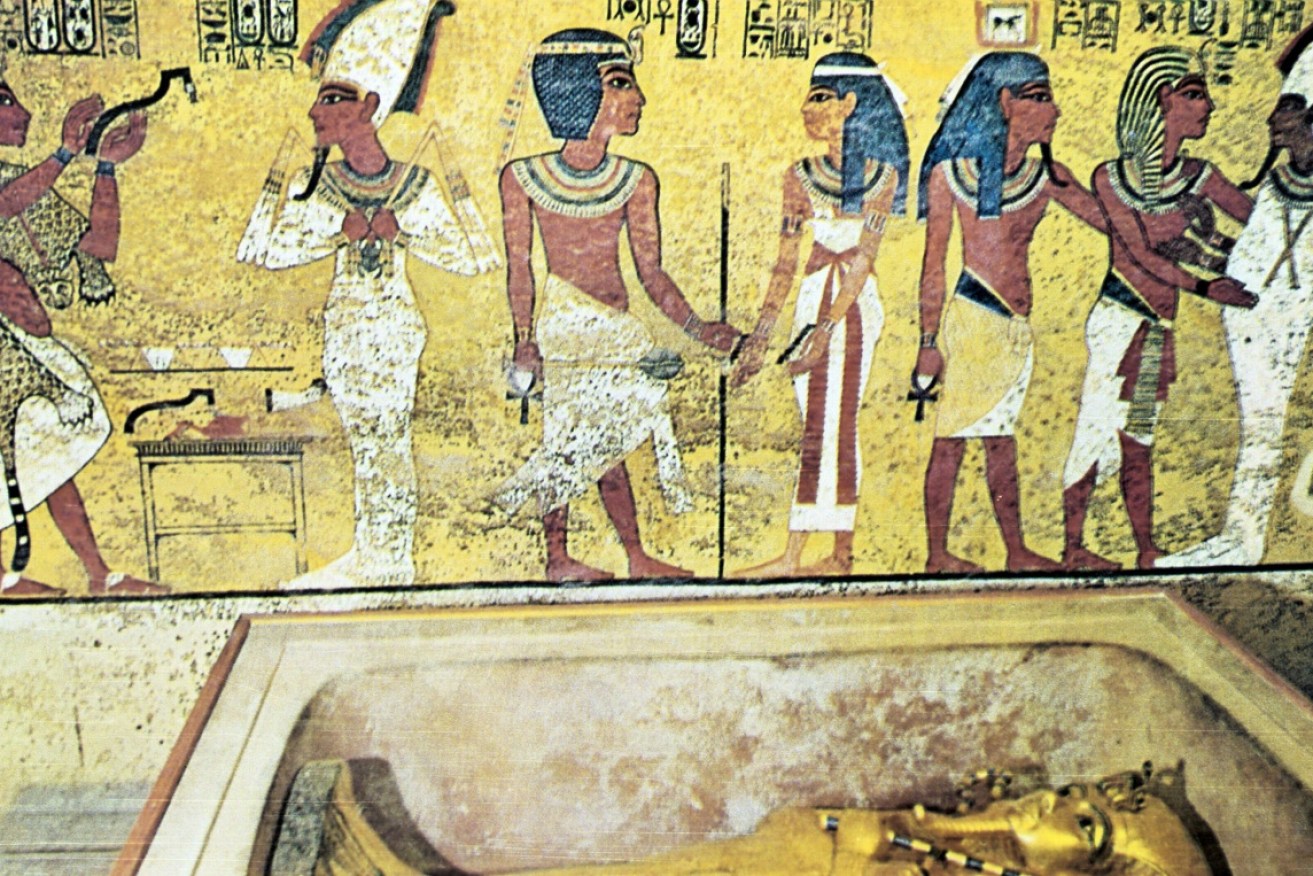Study finds mummy embalming preceded the Pharoahs

The sarcophagus at the Cairo Museum containing the gold coffin of Tutankhamun which held his mummy. Photo: Getty
Prehistoric Egyptians were using embalming to mummify their dead far earlier than the time of the Pharaohs and across a wider geographical area than previously known, according to new research.
Forensic tests on a prehistoric mummy, once thought to have been naturally preserved in hot dry sand, revealed for the first time that embalming was taking place 1500 years earlier than previously accepted, the study published in Journal of Archaeological Science on Thursday found.
Jana Jones, Egyptologist and ancient Egyptian burial practices expert from Australia’s Macquarie University, said the finding was “a momentous contribution to our limited knowledge of the prehistoric period and the expansion of early mummification practices.”
“By combining chemical analysis with visual examination of the body, genetic investigations, radiocarbon dating and microscopic analysis of the linen wrappings, we confirmed that this ritual mummification process took place around 3600BC on a male, aged between 20 and 30 years when he died,” Jones said in a statement.

An Egyptian mummy from 300BC-150AD in the 2011 Eternal Life in Ancient Egypt exhibition in Washington DC. Photo: Getty
The scientists found the mummy had undergone an embalming process with plant oil, heated conifer resin, an aromatic plant extract and a plant gum/sugar all mixed together and used to fill the funerary textiles in which the body was wrapped.
The embalming “recipe” contained antibacterial agents used in similar proportions to those employed at the peak of Egyptian mummification some 2500 years later.
The mummy also came from southern Egypt, indicating for the first time that embalming was taking place over a wider geographical area when the concept of a pan-Egyptian identity was supposedly still developing, the researchers added.

The embalming techniques for mummies have been found to have been used in 3500BC. Photo: Getty
Stephen Buckley, an archaeological chemist and mummification expert from the University of York in Britain, said the findings represented “the literal embodiment of the forerunners of classic mummification, which would become one of the central and iconic pillars of ancient Egyptian culture”.
“Having identified very similar embalming recipes in our previous research on prehistoric burials, this latest study provides both the first evidence for the wider geographical use of these balms and the first-ever unequivocal scientific evidence for the use of embalming on an intact, prehistoric Egyptian mummy,” Buckley added.
The mummy had been housed in the Egyptian Museum in Italy’s Turin since 1901 and had never undergone any conservation treatments, providing a unique opportunity for accurate scientific analysis, the study noted.
The findings build on research from 2014 that first identified the presence of complex embalming agents in surviving fragments of linen wrappings from prehistoric bodies in now-obliterated tombs in Middle Egypt’s Mostagedda.
-AAP








